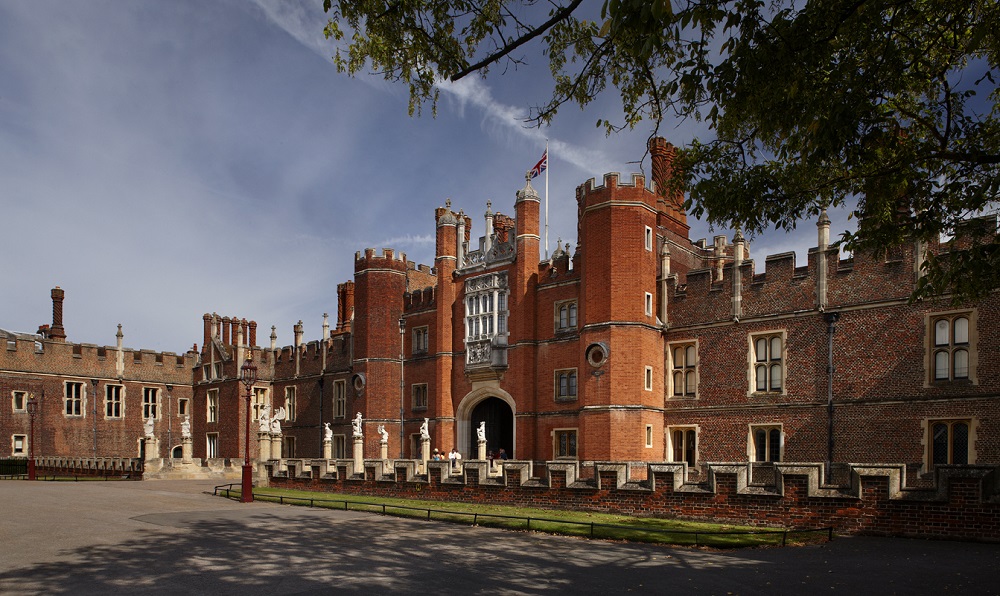
London and Surrey’s royal places to visit
London and Surrey’s royal places to visit
Here’s 10 top spots in south west London and Surrey with fascinating royal history… By Kate Byng-Hall
We’re lucky that there is so much royal history to admire right on our doorsteps.
Here are our top picks for a royal day out near you:
Hampton Court
One of the most recognisable and historically significant buildings in the country, a visit to this massive palace has got to be on your to-do list.
It was first built by Cardinal Wolsey in 1514, but his boss Henry VIII fell for it, and quickly took over ownership. He spent a lot of time there, with his third wife Jane Seymour dying at the palace after giving birth to the future Edward VI, and his fifth Katherine Howard being kept there before her execution (her ghost famously haunts the Haunted Gallery).
William and Mary added the beautiful baroque façade onto the back of the palace after taking the throne in 1689, along with the gardens and the maze (which is the oldest in the UK, surviving for over 300 years). Queen Victoria opened the palace to the public in 1838.
Visit the palace, gardens and café.
Kew Palace
Kew Palace, situated in the Royal Botanical Gardens at Kew, is the smallest of the royal palaces. It was first built by a silk merchant in 1631, but it caught the eye of George II and his wife during his reign, and was used by several generations of royals as a weekend retreat.
It later became a refuge for George III during his battle with mental illness, when the rest of the country were calling him mad.
The palace is accessible with entry to Kew Gardens.
Kingston
Kingston saw the coronation of at least two and possibly up to seven Saxon kings here. See the Coronation Stone, which was supposedly used in the coronation ceremonies.
The stone is free to visit outside the Kingston upon Thames Guildhall.
Royal Parks
Both Bushy and Richmond Parks are classified as royal parks because they were originally used for recreation – usually for hunting – by the royal family, and are still owned by the crown. Richmond Park’s royal connections begin with Edward (1272-1307), when the area was known as the Manor of Sheen. The name was changed to Richmond during Henry VII’s reign. In 1625 Charles I brought his court to Richmond Palace to escape the plague in London and turned it into a park for deer.
Marble Hill House (pictured below (c) English Heritage)
Marble Hill House in Twickenham was built in the 1720s for Henrietta Howard – one of George II’s mistresses. Henrietta was a great woman, and befriended many of contemporary England’s best writers. The house perfectly captures fashionable Georgian culture.
It has has just reopened after a big renovation project. Find out more here.
Bushy House
Bushy House is the former residence of King William IV and Queen Adelaide. Today, it is part of the adjacent National Physical Laboratory (NPL).
The House is not normally open to the public as much of it has been converted in laboratories, but it can be seen from within Bushy Park.
Richmond Palace
In the 16th and 17th centuries, Richmond Palace was a huge royal residence on the Thames. It was first built in 1501 by Henry VII to mark the renaming of the area from Sheen to Richmond.
Richmond Palace was Elizabeth I’s favourite palace, but was sold during the Interregnum after the execution of Charles I and fell into disrepair before eventually being demolished.
The original Gate House and Wardrobe (yes, a house used as Elizabeth I’s wardrobe) still stand near Richmond Green, but are now private property.
The King’s Observatory
The King’s Observatory in Old Deer Park was commissioned in 1769 by George III. He was fascinated with science, and wanted the observatory for his own private use, and for the education of his children.
The building is privately owned, but is sometimes open to the public.
Syon Park (pictured above)
Syon Park in Brentford today contains a 400-year-old house, an impressive conservatory and extensive gardens, but an abbey central to royal history originally stood on the site.
Syon Abbey was built in 1415 by Henry V for the only Catholic Bridgettine order in England. By the Tudor period, it had become a centre of fine scholarship and a major pilgrimage location.
There were strong links with Henry VIII, but it was dissolved after the Reformation in the 1530s, and was transformed into a private house.
Visit the house, park and Great Conservatory.
Ham House
Ham House was built in 1610, and was gifted to courtier William Murray by Charles I in 1626 as they were childhood friends. Murray remained loyal to the crown throughout the Interregnum despite Charles’ execution, risking his life to stay in contact with the future Charles II who was in exile in France.
The house is a beautiful example of a Stuart house with a rich history.
Visit the café and gardens.






